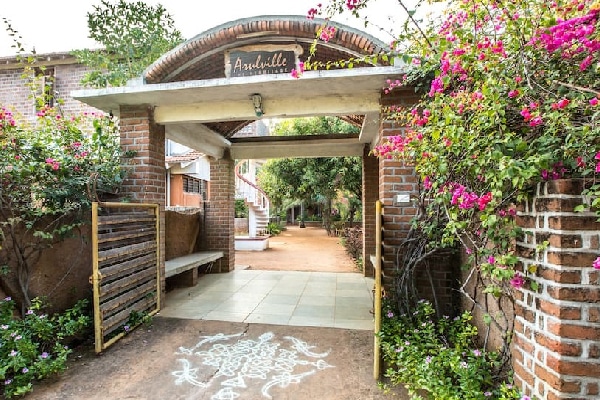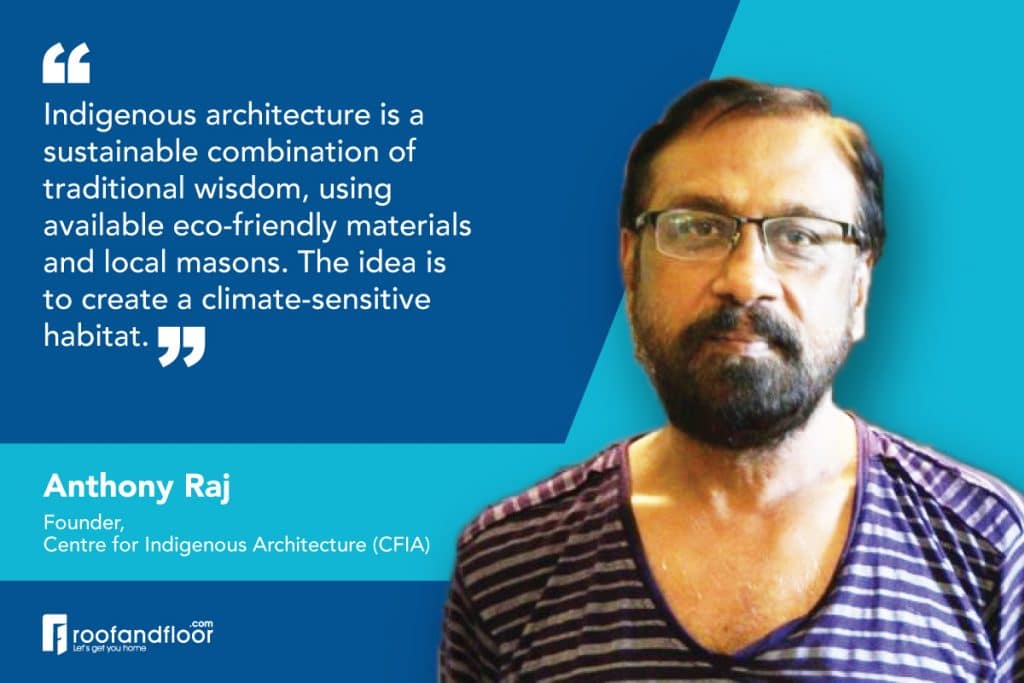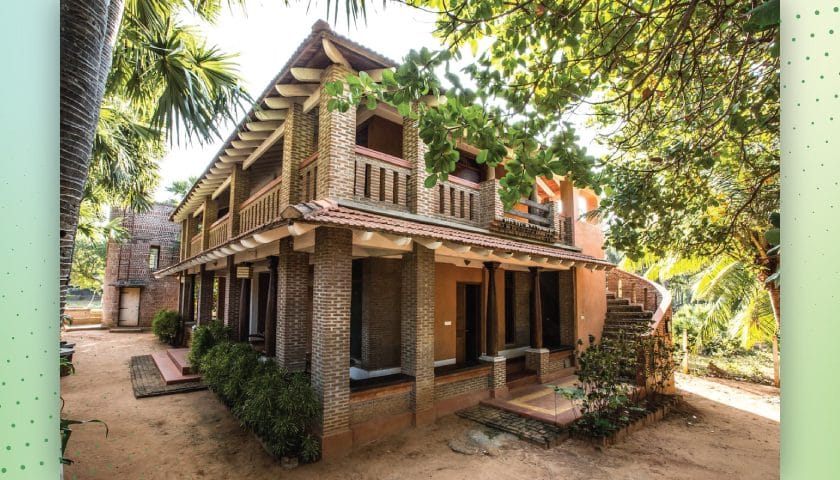Haven’t we all thought of leaving our regular jobs and following our passion at some point in time? Meet Anthony Raj, who not only left his lucrative job but also started the Centre for Indigenous Architecture (CFIA) with no formal degree in architecture.
After spending nearly four decades in the corporate sector, Anthony Raj discovered the beauty and benefits of traditional architecture.
“I was amazed by the wisdom contained in traditional architecture. I felt compelled to spread this message to the world in my small way. And that’s how the Centre for Indigenous Architecture was born. Our mission is to construct eco-friendly habitats,” says Raj.
Arulville: It all started back in 2011
Bored with the regular corporate life, Raj was looking to do something interesting.
It is then that building a farmhouse for his family struck him. Today, the place is popularly known as Arulville.
The basic design of Arulville was conceptualised in 2011 by two well-known vernacular architects. However, they could not stay long enough to supervise and complete the project. Fascinated by it, Raj developed an interest in learning the principles and practice of this architecture.
“I took the responsibility to evolve the design and construction as it went along. The project was eventually completed in April 2013,” he beams.

Arulville received a lot of publicity, which landed Raj his next project.
“The publicity brought a client who wanted us to build a Veda Patashala for them in a southern suburb of Chennai. Impressed by the construction quality and architecture, I was asked to redesign another campus as a major Vedanta Centre. It was perhaps the first instance of architecture influencing a mid-course change in a managerial decision.”
And the rest, as they say, is history.
So, what is indigenous architecture all about?
 Indigenous architecture is a sustainable combination of traditional wisdom, using available eco-friendly materials and local masons.
Indigenous architecture is a sustainable combination of traditional wisdom, using available eco-friendly materials and local masons.
The idea is to create a climate-sensitive habitat catering to contemporary needs.
It is different from vernacular architecture, which are historical typologies, such as the Chettinadu house, Nalukettu etc.
The real focus in indigenous architecture is the careful study of climatic conditions, site peculiarities and, most of all, customisation.
The popular projects
2016: A beach house on an odd-sized small plot at Kovalam. This house was built in the memory of a young member of the family who died at the age of twenty-five. Today, it serves as a homestay for visitors who appreciate indigenous architecture.
2016-17: An old-age home, right in the heart of an industrial estate at Moggapiar in West Chennai. The building represents a spacious solution to all the noise, heat and humidity of Chennai.
2017-18: A farmhouse in Thiruttani, a hill town famous for its ancient temple dedicated to Lord Murugan.
All of these buildings are known for their iconic, climate-sensitive architecture, and smaller carbon footprint.
Future plans
CFIA has now proposed to set up an Alliance for Indigenous Architecture. This Alliance intends to rope in young architects from different parts of the country and get contracts for habitats using indigenous materials and methods.
“These youngsters will feel empowered to pursue their passion for sustainable architecture here and now, without having to wait for years before clients trust them with such projects. In addition to this, we are also planning an architecturally-integrated Arulville Township around the farmhouse. The small community will be self-sustainable with water, renewable energy, and wastewater management,” says Anthony.
The mission: Leave the place better than you found it!
It is impossible to be a warrior for sustainability overnight. Each of us can start small though.
“We can consciously try to use less water, less air-conditioning, and the like. Each of us can reduce our carbon footprint, saving up to huge reservoirs of energy,” says Raj.
As an American Indian proverb goes, we should walk this earth in such a way that the future generations do not see our footprints.


Seriously Arulville is one of the best architecture design…